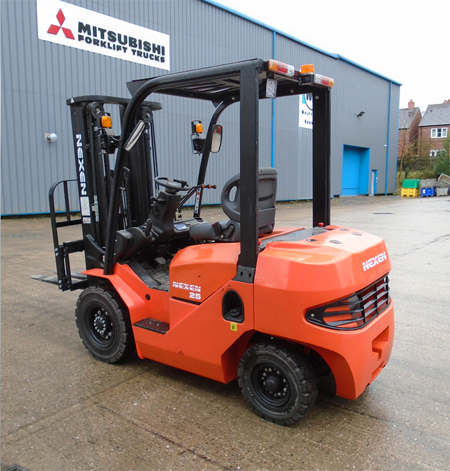Call Our Experts On:
Unlike diesel and LPG forklifts, electric forklifts are battery operated. In order for the vehicle to run as smoothly as possible, it’s imperative that the battery is well maintained throughout the machine’s life. By looking after the forklift battery, you’ll be elongating the overall life of the vehicle, giving you at least five years of uninterrupted service as opposed to just two or three.
As well as ensuring you have a fully-functional forklift for the next few years, it will also help you to keep expenses down. Replacing parts, components and whole forklift batteries can be extremely costly, so looking after the machine now will help you financially in the long run. But how can you maintain your forklift battery effectively to ensure you reap the aforementioned benefits? Charnwood Lift Trucks are on hand with the answers
It’s important that you charge the forklift battery completely at the end of each day. Once it’s unplugged the next morning, operators should continue to use it throughout the day, running the battery down in the process. Only charge the forklift once all work has been completed and leave it plugged in overnight.
The life of a forklift battery depends on how many charging cycles it undergoes. If you charge it more than necessary, you’ll be depleting the life of the battery as opposed to maintaining it. On average, a forklift battery will start with 1,500 charging cycles before they eventually expire. If you charge it, on average, once a day for three-hundred days a year, then you’ll get around five years of use out of your electric vehicle.
There are a number of things you should refrain from doing whilst the battery charges, including:
The battery’s fluid levels are paramount to the overall health and life of the forklift. If the fluid levels fall below a certain level, the plates will become exposed to the air which, in turn, will cause long term, irreversible damage.
As a result, the efficiency of the battery will be reduced significantly. On average, fluid levels should be topped up after every ten charges, but only do this after the battery has been charged up and never before it’s plugged in.
Make sure to protect your forklift battery from accidental acid spillages and be sure to wipe it away if the aforementioned occurs, but do so safely following correct procedures and guidelines. To keep it in good condition, rinse it through every six months with water to get rid of any debris and other contaminants that might affect the performance of the battery.
Forklift batteries can be susceptible to oxidation and, therefore, rust. If the rust is allowed to build up considerably over a long period of time, this could cause lasting damage to the battery that cannot be reversed. The key here is to prevent rust buildup on the battery itself, and so you should change the battery, when needed, in a dry, well-ventilated area to give it the best possible chance at the start of its life.
Charnwood Lift Trucks have a team of dedicated professionals who are always proud to provide our customers with the material handling equipment they need, no matter what industry you’re in or how small your premises are. From electric forklifts and reach trucks to stackers and order pickers, we’ll have you covered when you choose Charnwood Lift Trucks. For more information about the warehouse equipment and forklifts we have available, including diesel, LPG and second-hand forktrucks, then get in touch with a member of our team today – we’re always happy to help.

Charnwood Lift Truck Services are one of the leading Mitsubishi Forklift dealers operating in the Midlands.
If you have any questions about our products and services please contact us.
